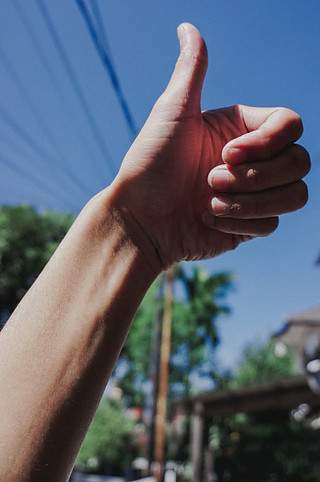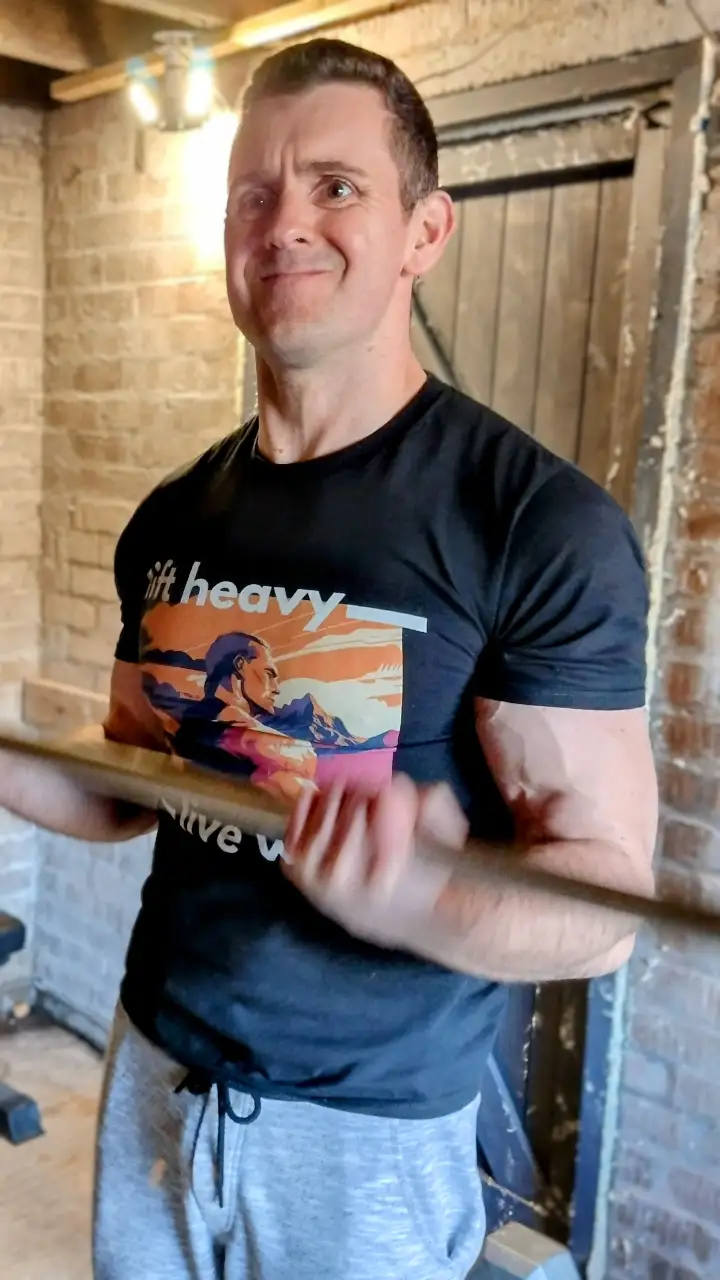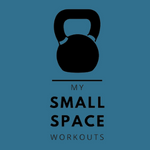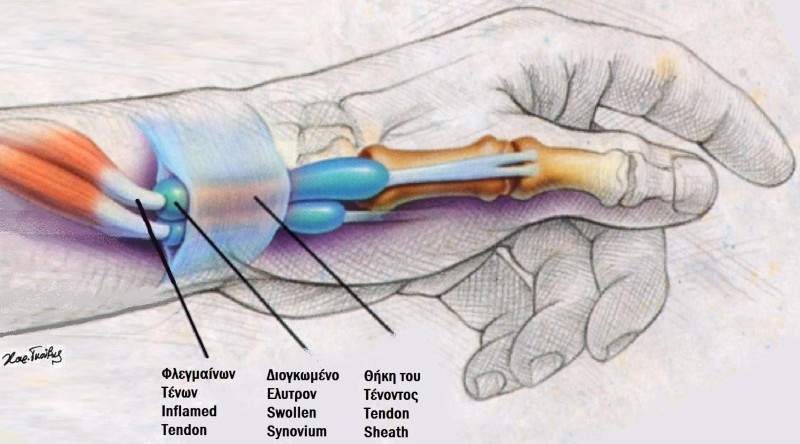
If you love to workout but suffer from De Quervain’s tenosynovitis then you will know how painful it can be to grasp a barbell, dumbbell or kettlebell. You’re probably wondering whether lifting weights with De Quervain’s is even a good idea? In this article we will explore how you can continue to enjoy working out despite De Quervain’s and share three hacks to make lifting weights with De Quervain’s possible as well as making your workouts more comfortable.
Affiliate Disclosure
As an Amazon Associate, I earn from qualifying purchases made through the affiliate links on this website. I only recommend products that I personally love and believe will add value to you as you pursue your fitness goals. By using these links to make a purchase, you’ll be supporting my efforts to bring you quality content, and it won’t cost you anything extra. Thank you for your support!
What is De Quervain’s Tenosynovitis?
De Quervain’s is a painful condition thought to be caused by repetitive movements of the wrist and hand. It affects the tendons on the thumb side of your wrist making gripping very uncomfortable.
It is understood that the sheath around the two tendons that connect to the thumb become thickened which restricts their movement and causes pain.
The main movements which will cause pain for those with De Quervain’s are turning the wrist and grasping to make a fist.
The pain may well be accompanied by other symptoms such as swelling around the base of your thumb and restrictions in moving your thumb.
De Quervain’s is a condition which may require medical attention if rest doesn’t see a remission of symptoms.

Can You Work Out With De Quervain’s?
The good news is that while De Quervain’s can be very annoying and painful when it flares up, you can work on the condition and your strength training at the same time.
The trick is to work on modifying your workouts, enjoy alternative sessions, and recondition your thumb as best you can.
It may be frustrating when you feel like you should be able to do more with what feels like a minor injury. But, it is better to take your time and get the condition under control than to make it worse.
So before we look at the question of how to lift weights with De Quervain’s, let’s first take a look at what you can do in terms of exercises specifically designed to treat this painful condition.
Start With The Best Physical Therapy For De Quervain’s
The best thing to do if you are dealing with De Quervain’s is to work on conditioning your thumb so that you aren’t dealing with the problem for too long.
There are lots of exercises you can do to keep the thumb and the related tendons mobile and less likely to cause pain. This is much better than doing nothing, where inactivity can lead to the thumb stiffening up and the inflammation not improving.
A good starting point is a thumb lift, where you put your hand flat, palm up, and raise your thumb to meet the base of the ring finger. You can also do something similar where you bring the thumb and pinky together repeatedly to stretch the tendons further.
As you begin to regain strength and mobility in your thumb, you could even consider adding some resistance using a device such as the one seen here:
However, before investing in that kind of equipment, I’d highly recommend seeking the advice of a physical therapist who can assess the severity of your condition ang guide you on the best options for stretches, exercises and drills to restore all the function of your thumb.
Small wrist extension and flexion exercises with the added resistance from the finger exerciser featured above can help get the thumb and wrist in better shape. But, you need to work up to this – so don’t be in any rush and ALWAYS back off if you experience any increase in pain.
Still, ongoing progression here will ultimately make it easier to get back into lifting weights.
It is also a good idea to consider a thumb splint of some kind.
Weightlifting already provides a little bit of restraint around the thumb and wrist with protective straps. This can provide a little bit of relief, but neither this nor weightlifting gloves are designed to handle the motion and pain related to De Quervain’s.
Instead, it is better to get a specific splint that holds the thumb in the right place and to wear this when you aren’t doing your thumb exercises. This can be an issue when dealing with some weight training exercises, but don’t give up on the idea just yet.
While we’re talking about splints, here’s a model specifically designed for De Quervain’s which is getting amazing reviews at Amazon and which is very keenly priced:
As we’ll see, I have a few hacks for you to try that should see you getting great pumps despite De Quervain’s.
🚨 Attention, fitness enthusiasts! 🚨 Are you struggling with muscle growth due to stress or a medical condition? Discover the secret weapon that helped me (and countless others) turn the tide and transform our fitness journeys despite setbacks! Unlock the SHOCKING TRUTH about how this all-natural, science-backed supplement can help you break through stress barriers and finally achieve the gains you deserve! Don’t miss out on the life-changing information in this article ➡️ Does Stress Sabotage Your Muscle Growth ⬅️ Trust me, you won’t believe what you’ve been missing out on! 💪
Lifting Weights With De Quervain’s
If you are ready to get back into weight lifting despite your De Quervain’s, you can’t push yourself too hard.
There is no point jumping from those resistance band flexion exercises to a fully loaded barbell bicep curl!
You will just aggravate the tendon and send yourself back to where you started. Reduce the weight you use, the amount of time you spend with them, and be careful with the motion.
It is also a good idea to work on other exercises for the upper body that don’t put pressure on your thumb. Focus on what you can do rather than what you can’t at that moment.
The splint will resist the motion in your thumb and wrist in one arm, but not the other.
You may also want to consider using your recovery period to focus on other parts of the body that you may have neglected.
For example, you can work on your lower body with squats and other leg exercises or spend this time building up your cardiovascular fitness by working on running or using an exercise bike or rowing machine for example.
==> RELATED: What is the best recumbent exercise bike?
The main thing to avoid in your workouts is any exercise where you need to have an ongoing grip on something.
The sustained clenching action in your hand puts unnecessary pressure on the affected tendon and keeps the thumb in an undesirable position.
Therapists tend to recommend giving up sports that require rackets and similar tools where there is that constant pressure. It is also a good idea to avoid rowing because of the grip on the pulley (although you may want to check out the hacks below, before writing-off rowing completely).
Away from the gym or sports center, you also need to be mindful about how you use the thumb with other tools in the garden or kitchen. These small changes could help you speed up your recovery time.
Now, having read that you may be left wondering what one earth you can do to continue to lift weights with De Quervain’s! Well don’t worry – here are some hacks to ensure that you still get your weight lifting fix!
🏋️♀️ Lift Heavy, Live Well – The Shirt That Fuels Your Workout!
“If I can push past migraines, pancreatitis, and more to stay fit, so can you. Wear your motivation!”
👇 Click to Buy Your ‘Lift Heavy, Live Well’ Tee NOW! 👇
🔥 Limited Edition! 🔥
This isn’t just a t-shirt; it’s a badge of honor. Perfect for workouts, it’s designed to:
- Keep you inspired 💡
- Make you part of a like-minded community 🤝
- Remind you of your strength and resilience 💪
Limited stock! Click below to join our community of warriors!

Hack 1: Get Help With Your Grip
When it comes to pulling movements – I’m talking about chins or bent-over dumbbell rows – if only there was a way to pull on the bar without clenching your fist.
Well, you’ll be pleased to know there is.
A quality set of weight lifting hooks will ensure that you can keep working on those ‘pulling’ weight lifting movements without putting undue strain on your thumb, or even requiring you to involve your thumb at all in the gripping process.
Be warned though, you’re probably not going to breaking your lifting records while using these – and you certainly shouldn’t be trying to either.
Hack 2: Open Palm on Push Ups and Bench Press
When bench pressing, don’t clench your fist around the bar.
Instead, make a platform with the palm of your hand for the barbell to sit upon and ensure that your thumb is on the same side of the bar as your fingers.
If you’ve never lifted the barbell using this hand position, you’ll be surprised at how stable the bar is, despite the fact that your fingers and thumb aren’t wrapped around the bar.
However, if the push up is your favored chest exercise, then you may want to consider investing in a set of push up bars so that you can adopt a similar hand placing on the bars.
This can be somewhat more comfortable for your thumb (and hand generally) than standard pressups where the hand is flat against the floor.
Hack 3: Open Hand Kettlebell Goblet Squats
Similar to the previous hack, but worthy of a mention in it’s own right, the kettlebell goblet squat is such a great exercise and suited to those suffering with De Quervain’s.
This is because the kettlebell can be held in the hands without the need to grip it.
Simply allow the horns of the kettlebell handle to rest in each palm with the ‘bell’ hanging between your wrists.
Squat down as deep as you can without leaning forward, while keeping your back flat.
Return to the starting position squeezing with your quads and glutes.
There should be no pressure or tension in your thumb or the supporting tendons whatsoever, meaning that you’ll be free to push out as many kettlebell goblet squats as you can manage!
Should You Get Cortisone Shots To Help You Lift?

Whether your condition is short-term or a more chronic problem, and regardless of the level of pain, it always helps to get some medical advice on how to handle it.
Your doctor should be able to guide you in the right direction for the best exercises and splints. He may even refer you for some physical therapy sessions.
They can also advise you about the potential for cortisone shots and even De Quervain’s surgery.
Surgery is the more drastic option here because no one wants an invasive procedure if they can avoid it. Still, the operation is short requiring only a small incision to reduce pressure on the tendon that runs down the side of the wrist near the thumb.
The surgery is typically carried out as day surgery meaning that you could leave the medical facility the same day that you undergo the procedure.
If that seems a little too extreme, you may definitely want to speak to your healthcare professional about the prospect of cortisone injections to ease the inflammation and pain.
They aren’t ideal, but may make it easier to lift if you can’t bear the idea of going cold turkey for a while.
How Long Will You Be Out Of Action With De Quervain’s?
This all depends on the severity of the condition and your ability to lift with the hacks and equipment I’ve highlighted above.
There will be some people dealing with ongoing discomfort that can’t lift at all and others that will be able to get back into the gym pretty quickly with a combination of rehabbing, modifications, splints, and shots.
You need to find what works for you and be prepared to be patient while you rehabilitate from the condition.
Staying Fit With De Quervain’s
So there you have it, while there’s no getting around the fact that De Quervain’s is most definitely a setback in anybody’s training plan, it doesn’t mean that you need to give up and become a couch potato!
In this article we’ve looked at some of the supports that are available specifically for De Quervain’s, a unique resistance-based hand strength exercise device, a support that will do the gripping for you as well as hacks that will enable you to continue to work out.
Above all else, I hope that this article has given you a sense of hope that you’re health and fitness needn’t be written off by this unpleasant condition.
If you’ve ever suffered from De Quervain’s or are still siuffering with it, let me know in the comments how you manage the condition and whether you have been able to continue exercising despite the discomfort.




Thank you for this detailed and great guidance article. I was doing bodybuilding but this disease appeared. I had De quervain surgery in 2023 May. I sometimes feel tenderness in my wrist again. When do you think I can start bodybuilding. What kind of exercise should I do? How many days, how many hours, what movements? Should I wear anything to protect my wrist and what should be its features?
Hello!
First off, thank you so much for your kind words and for sharing your situation. Dealing with De Quervain’s, especially post-surgery, can indeed bring its own set of challenges back into the realm of bodybuilding. It’s fantastic to hear about your determination to get back into it, though!
Given the tenderness you’re still experiencing in your wrist, the best course of action would be to consult with a physical therapist. They’re equipped to assess your current condition in detail and can help tailor a bodybuilding program that’s just right for you, taking into account the specific needs and limitations of your wrist.
Recovery and rehabilitation are highly individual, so the timeline for when you can start bodybuilding again, the type of exercises you should focus on, the duration of your workouts, and the specific movements that would be beneficial for you, can best be determined by a physical therapist. They can guide you on the frequency and intensity of your workouts to ensure you’re strengthening your wrist without risking further injury.
Regarding wrist protection, a physical therapist can also recommend the type of support that would be most beneficial for you. Features to look for might include adjustable straps for a snug fit, comfortable material that doesn’t irritate your skin, and sufficient support that allows a range of motion for your specific activities.
Remember, the world of fitness is vast and adaptable. With all the equipment available, from bands and cables to kettlebells, there’s a plethora of ways to engage in bodybuilding that can be customized to your situation. I’m 100% confident that with the right guidance from a physical therapist, you’ll be able to create a bespoke bodybuilding program that not only considers your wrist’s condition but also keeps you motivated and on track towards your fitness goals.
Stay positive, and keep that hope alive. Your journey back into bodybuilding, though it may require some adjustments and patience, is far from over. It’s just taking a slightly different route. Wishing you all the best in your recovery and return to bodybuilding. You’ve got this!
All the best,
Matt